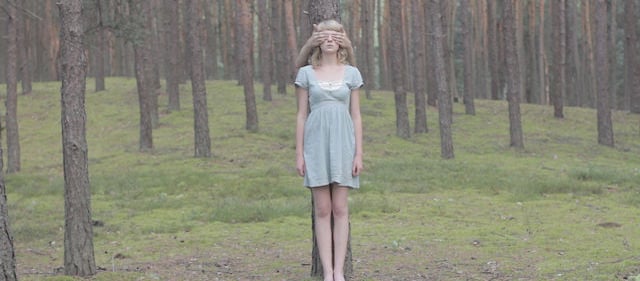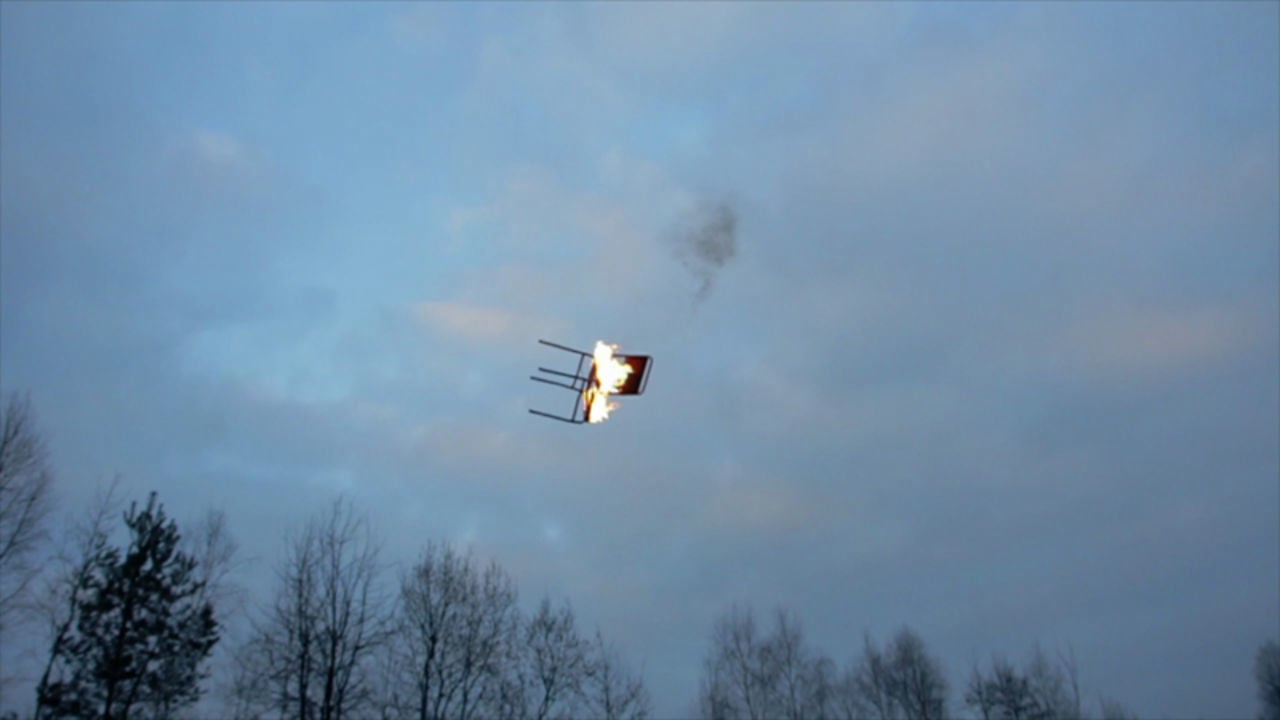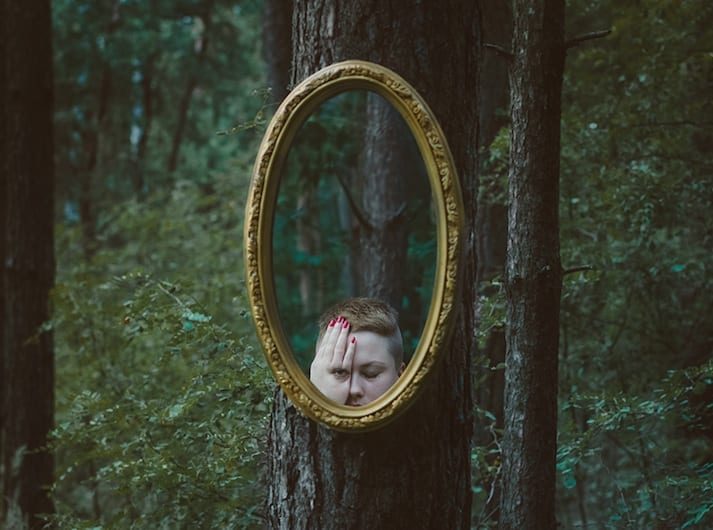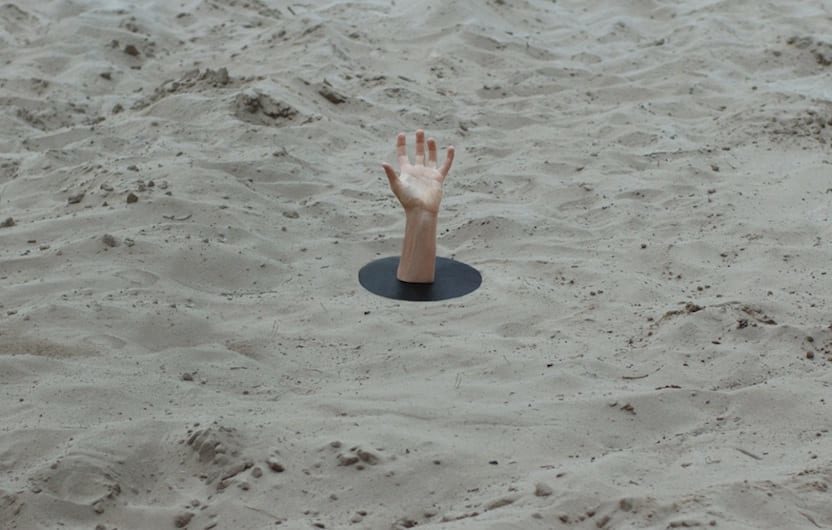What was the brief for Subscape’s track, I need You, and how did you evolve it? Did you work closely with the band or were you given creative freedom?
This time the brief was rather simple, but the information I provided was enough to draw the company’s attention and lead us to further talks. The whole concept had been evolving up until the day we started shooting, though the basic idea remained the same – major emphasis in developing the concept was on building psychological portraits of the kids. Deciding how and in what order each of the toys was to be destroyed. The toys in the children’s bags and backpacks were intended to imply their personality traits. Eventually, we only focused on several of them, while the rest was to give the story dynamism and end it with a spontaneous reaction in the scene with the car. Usually I prefer to have more on paper and reduce it during my work on the set – that gives me the sense of security. Without freedom there’s no progress, that was the case also this time.
Did you write the narrative, it feels as if it’s a homage to the end of childhood?
Growing up is discarding those aspects of our personality that are no longer helpful for the social development of an individual. In spite of feeling the nostalgia, built upon interactions between an object and a person or between people, we have to leave some matters behind in order to see in its full glory what awaits us. An artist should surround themselves with people who are down-to-earth, sincere and genuine, thus they won’t make his imagination go in a negative direction.
What was behind your decision to use a DoP and crew on this video?
First of all, I knew from the very start I wouldn’t be able to supervise and guide the children and operate the camera at the same time, all by myself. Secondly, this is the next stage of my growth as a director who wants to focus on instructing and leading the crew, while entrusting the photography to a professional. Thirdly, I always intend to achieve the best possible image quality, and because we decided to use the Red Epic, we needed the cameraman to react quickly to the children’s rapid movement. The most important thing on the set is division of duties, especially when you do things as dangerous as burning down a car with a group of kids, the oldest of whom is 13.
Until this latest video for Subscape you have been director, dop, and editor of all your videos – where did you learn the skills, are you self taught or did you go to film school?
This isn’t the first time someone helped me with operating the camera but certainly one of few such times. I learned most of my skills by myself, through the job at a local advertising agency I gained the experience of conscientiousness. I never got admitted to the film school, even though I’ve tried several times. Perhaps it was a matter of having already developed my own style and techniques at that time, my individual visual language. I’ve been focusing on building up my strengths and persistence, whilst the knowledge of theory and history of the cinema came from studying filmology for five years at the university.
What were the challenges of directing kids and how did you cast them?
Working with a child is not an easy task and working with a group of kids is even more difficult. You can’t simply give them commands and expect good effects. Some children need more attention due to individual aspects of their personality. When working with a child, you need to become friends with them, they should treat you as “one of them”, on the other hand you cannot let them feel excessive freedom. Controlled freedom is the best stance we can take to illustrate this situation. A child needs movement and change. I, as Human, feel fulfillment in giving them such possibility. As Camera, I secretly hope that after several years one or two of them will feel some kind of nostalgia for the clip, and at the same time will establish in their selves the feel of satisfaction about the path they’ve travelled so far.
Subscape feels as though you haven’t used your usual visual vfx as much – as if you have become more reliant on shooting in camera to reveal the story. Has this been a conscious decision?
New ideas come to my mind spontaneously, sometimes they are the result of an intense fascination with a particular painter’s works, other times they are inspired by either happy or dramatic events in my life, I often as well dive into the world of dreams and return with bizarre trophies. I’m a medium that receives the information accessible through empirical observation, as well as that lying behind the gates of transcendence. I transform them, reshape, find adequate means of expression and in the end invite audience to watch it. To put it simpler, I approach every project individually, using a different set of tools. If it’s the story that I want to emphasize in the clip, the relations between cause and effect, then I will keep the camera close to the character, make it move in a life-like manner. When I want to make a clip that intrigues and surprises with magical approach (like in Call Me in the Afrernoon), I treat the camera more like camera obscura.
Where did you learn how to create such surreal effects in your earlier work?
I’ve learned tricks by the method of trial and error, through exchanging image editing experiences with friends, as well as from the web. I always try to make the best possible use of the tools available, be it hacked cameras or advanced plugins for popular video editing programs. The whole process of creation is based upon deduction and reduction of the elements and choosing the right tools for it.
Nature features a lot in your work too, in particular am thinking of Call Me in the Afternoon and Treebeard in the Dead. Where does this influence come from?
I remember one of my friends once joked like this:
“When do you know it’s Człowiek Kamera’s clip that you’re watching?
When you see the forest.”
I come from a village in central Poland, when I was a child it was even smaller than now – the nearest city is about 15 km away, while the nearest forest is about 1.5 km from my house.
Your film work has really evolved over the last year from your earlier work such as for Sleep Party People and How to Dress Well which were shot in 2011 which are really imaginative and creative but the last four videos have rocketed in terms of sophistication. Do you feel that this has been a natural progression or has something different happened? Are you now signed to a production company? Do you work outside of Poland too, if not would you like to?
I think that now I’m much more specific with my goals and plans. Two years ago I was still thinking of becoming a cameraman, but the flood of experiences and images coming at me from every direction pushed me to take up the role of a director. Besides, that was a time when I worked on minor commercial projects which served little or no purpose for my development as an artist. During my work on the clip for Half Moon Run I decided to put all my eggs in one basket and it turned out to be the right decision. Two weeks ago I signed a contract with a young agency based in Paris – over the next few months I’m going to find out if it’s a step forward or not. I’m open to any suggestions and offers, that’s the only way I can keep developing as the Camera as well as the Human.
Your stills photography is surreal and wonderful. (See Related Content). Do you work with video and photography in parallel, does one inform the other? Were you a photographer before you began to direct?
Stills photography has been serving me as a playground for experimenting, I would often test if a particular effect is possible to achieve, how close to my imagination can I make the images I create. I don’t think I will ever completely give up still photography, although I want to focus on working with moving pictures at the moment. My passion for recording the world around me through photography has begun when I bought my first video camera, at the age of 18. No one in my family had been so deeply engaged in photography up to that point, therefore I had no one I could learn from – I simply experimented, recorded the concerts of my friends’ bands. The creation came with my first 35 mm camera. What I learned through photographing, I would translate into the way I handled the video camera and vice versa.
What’s your creative process? For instance did you storyboard the Subscape film in detail? Do you sketch, write script or simply write a shots list?
My treatments are not very different from those of other directors. They include a complete description of the situations I want to portray in the clip, references to paintings or photography. In brief, everything that may let the others understand my vision of the final picture. I keep drawing sketches of individual shots for all the time until I start shooting. I try to work out a story line and match the required changes in the picture with it. Just before the day of shooting I go to sleep and get up with that given song playing in my headphones, and a pen and piece of paper in my hands.
Who or what would you say were your greatest influences?
I like the films by Tarkovsky, Bresson, Dreyer, Haneke, Malick, paintings by Jeremy Geddes, Caspar David Friedrich, Aleksandra Waliszewska, Dino Valls, Adam Tan, and music of countless musicians. I draw inspiration from every sphere of art and life.
We google translated Czlowiek Kamera and it means Camera Man in Polish! Did your parents give you a headstart in life by calling you this or did you adopt this name?
Człowiek Kamera is a nickname I chose when I was a university student. After watching Jiga Vertov’s “Man with a Movie Camera” I felt a real temptation to start filming the world seriously. I decided to go further than the man from that movie. From that time I’ve been trying to convey the Man’s thoughts, feelings and emotions as accurately as possible, using the precise eye of the Camera. Camera is no more than a tool but if the Man handles it with sufficient sense and conscientiousness, then he has a good chance of being able to convey what’s inside his mind to the viewers. I try to develop simultaneously, as the Man and as the Camera.
Briefly describe your childhood please.
My first memory, or rather an awakening of the consciousness, was the TV screen. Inside of it I saw tiny people walking around enormous drawers, shelves and desks. Several years later it turned out that what I had watched was fragments of Polish fantasy movie “Kingsajz” (1987). The picture was interesting enough to make a crawling baby lift his head and open his eyes. In that way, what we call life – an addiction – had begun for me. In my childhood I’ve been spending my entire free time on reading comic books. There weren’t many available in Poland at that time – mostly the American bestsellers such as Spider Man, Batman, Punisher, X-Men. After that the fascination for Japanese animation and the cinema has started.
When did you first pick up a camera? And when did you realise you wanted to become a film maker. What part of the process do you enjoy the most?
One day my father borrowed a video camera from his good friend. I remember how badly I wanted to take it into my hands and shoot my own version of the family’s video chronicle, to take control over the reality being recorded at least for a moment. Unfortunately, my father’s worries were stronger. Only my silly faces and scenes of fooling around shot by my father left on the tape. For my entire adolescence a feeling of desire and lack had been growing somewhere in my subconsciousness. For the money I got for my 18th birthday I bought my first digital video camera. Oddly, I wasn’t sure of my decision, it was a half-spontaneous purchase. Up until now I keep reassuring myself that it was the right choice. I started recording the world around me, several years later engaged in filming music concerts, that was a nice activity for a student to do in the spare time. Thanks to that experience my hands became sensitive to the movement of the Camera, but it wasn’t enough to fully express myself. Right after finishing studies I’ve started my adventure with creation. At that time I could devote myself entirely to the work of Człowiek Kamera.
LINKS:
























